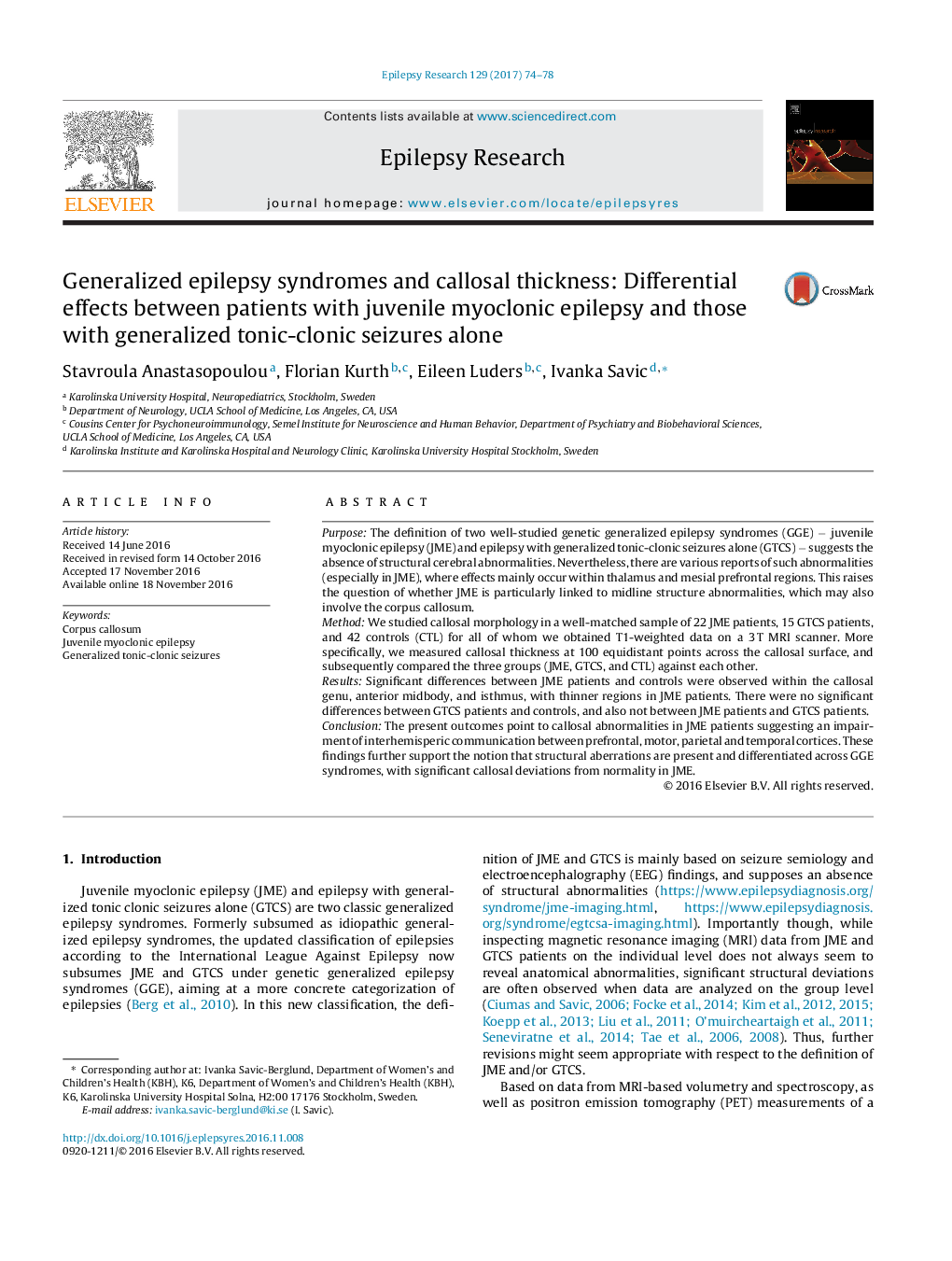| Article ID | Journal | Published Year | Pages | File Type |
|---|---|---|---|---|
| 5628774 | Epilepsy Research | 2017 | 5 Pages |
â¢Juvenile myoclonic epilepsy (JME) is assumed to have normal cerebral features.â¢Corpus callosum morphology was studied with high regional specificity in JME.â¢Significant callosal aberrations were detected in JME patients compared to controls.â¢JME may constitute an epilepsy syndrome with specific anatomical characteristics.
PurposeThe definition of two well-studied genetic generalized epilepsy syndromes (GGE) â juvenile myoclonic epilepsy (JME) and epilepsy with generalized tonic-clonic seizures alone (GTCS) â suggests the absence of structural cerebral abnormalities. Nevertheless, there are various reports of such abnormalities (especially in JME), where effects mainly occur within thalamus and mesial prefrontal regions. This raises the question of whether JME is particularly linked to midline structure abnormalities, which may also involve the corpus callosum.MethodWe studied callosal morphology in a well-matched sample of 22 JME patients, 15 GTCS patients, and 42 controls (CTL) for all of whom we obtained T1-weighted data on a 3Â T MRI scanner. More specifically, we measured callosal thickness at 100 equidistant points across the callosal surface, and subsequently compared the three groups (JME, GTCS, and CTL) against each other.ResultsSignificant differences between JME patients and controls were observed within the callosal genu, anterior midbody, and isthmus, with thinner regions in JME patients. There were no significant differences between GTCS patients and controls, and also not between JME patients and GTCS patients.ConclusionThe present outcomes point to callosal abnormalities in JME patients suggesting an impairment of interhemisperic communication between prefrontal, motor, parietal and temporal cortices. These findings further support the notion that structural aberrations are present and differentiated across GGE syndromes, with significant callosal deviations from normality in JME.
